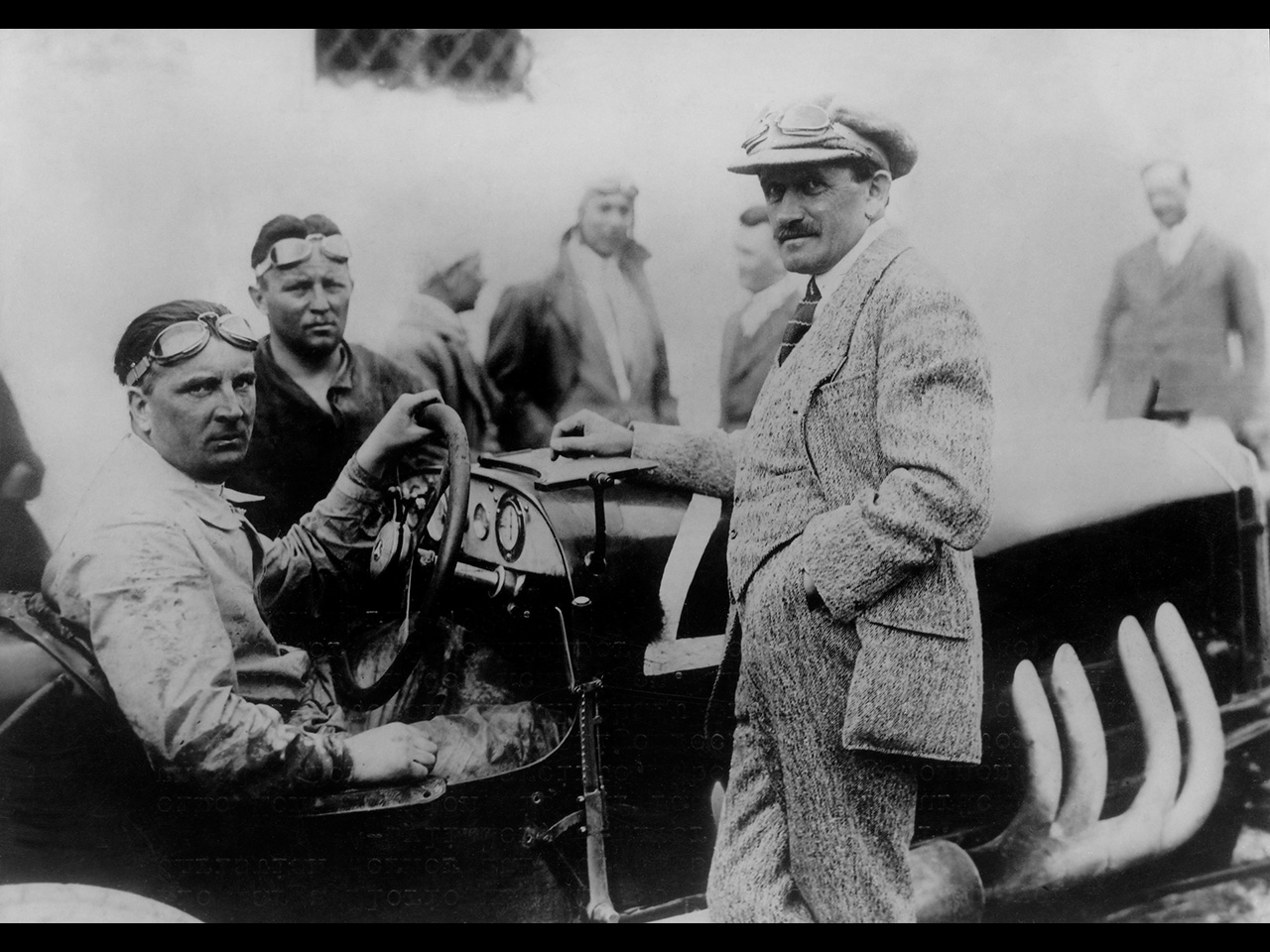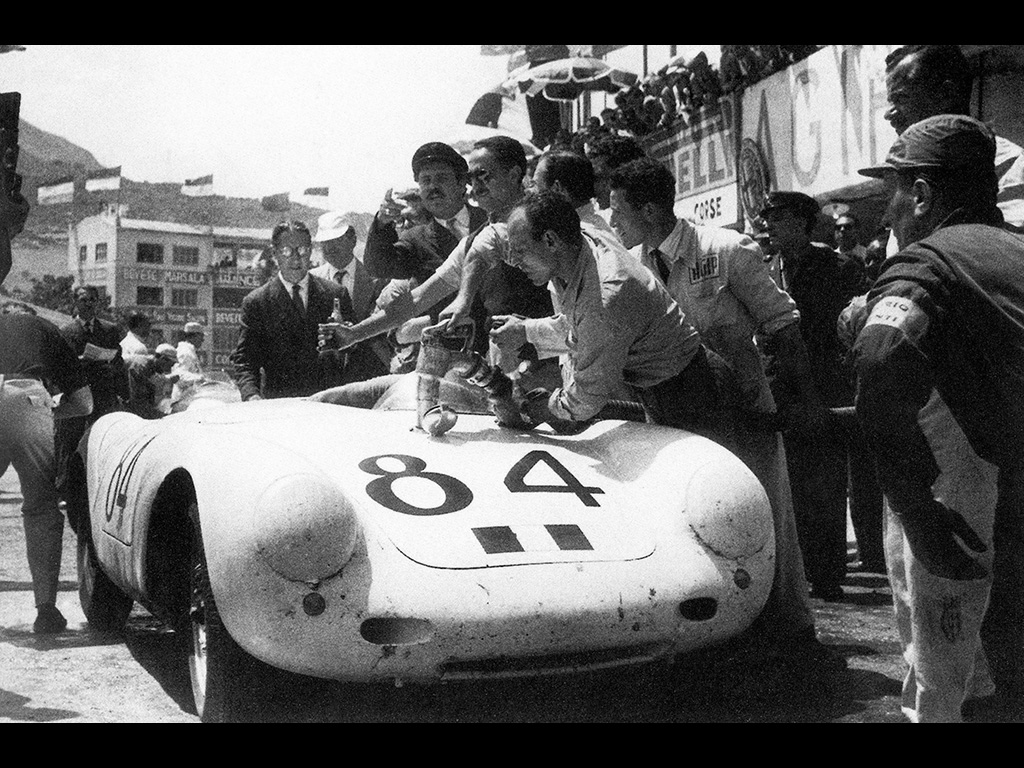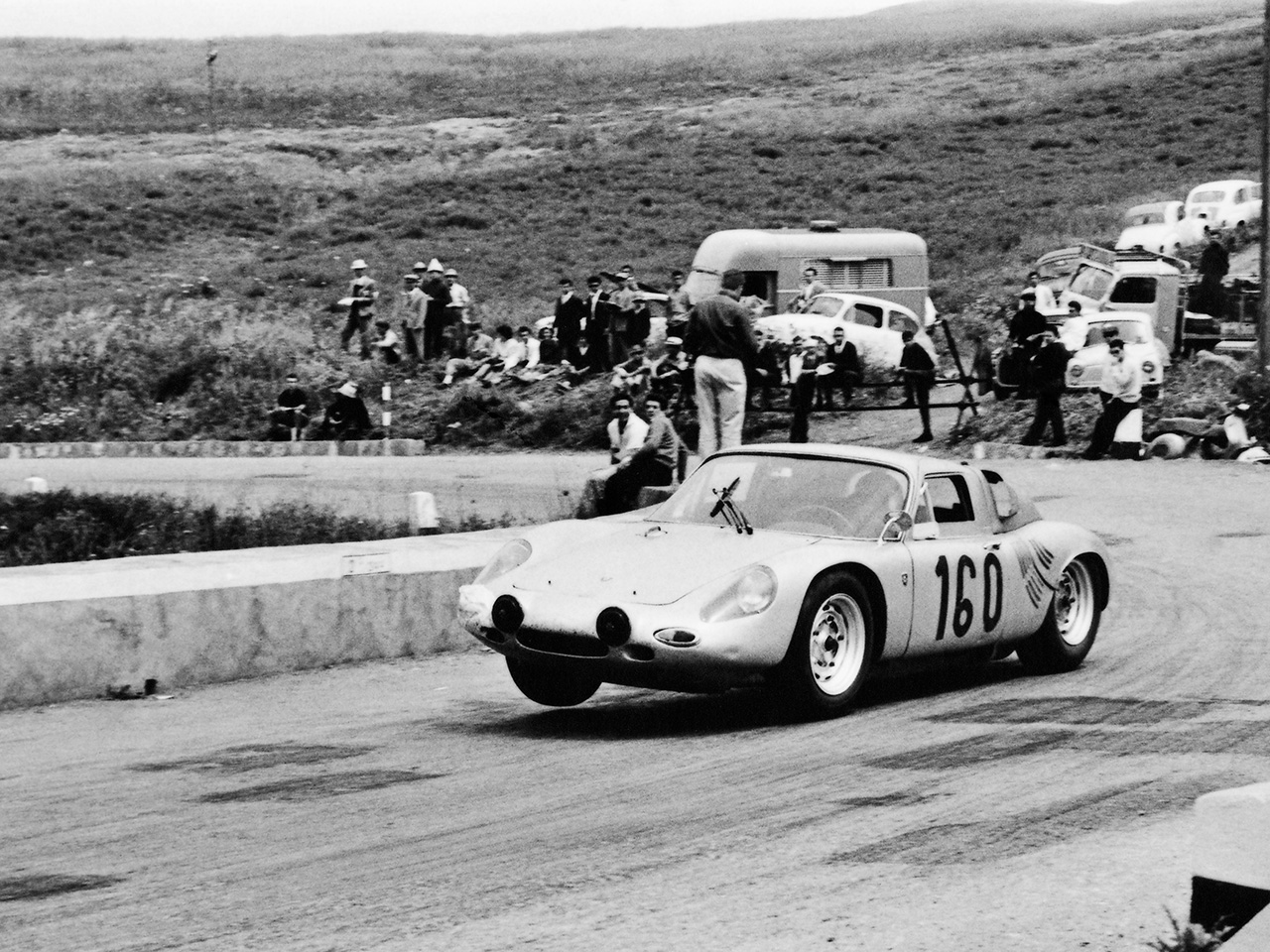Porsche at Targa Florio
|
Price |
-- |
Production |
-- | ||
|
Engine |
-- |
Weight |
-- | ||
|
Aspiration |
-- |
Torque |
-- | ||
|
HP |
-- |
HP/Weight |
-- | ||
|
HP/Liter |
-- |
1/4 mile |
-- | ||
|
0-62 mph |
-- |
Top Speed |
-- |
(Press release by
Porsche) "Viva Porsche" – Historic overall victory for Porsche 50
years ago at Targa Florio
On June 10, 1956, 50 years ago, the company now known
as Dr. Ing. h.c. F. Porsche AG, Stuttgart, celebrated one of its
biggest and most important racing victories. Italian racecar driver
Umberto Maglioli was the surprise overall winner in a Porsche 550 A
Spyder at what was then the world's longest-standing and most
difficult road race, the Targo Florio. The young company Porsche
gained worldwide recognition with this victory, as it was the first
time that a driver in a smaller racing class vehicle of up to two
liters cylinder displacement managed to beat vehicles with a higher
cylinder displacement. With an average speed of 90.9 m/h and a lead
of nearly 15 minutes on the second place vehicle, Maglioli not only
out-classed the competition but also assured the first overall
victory for Porsche in the Brand World Championships.
This victory was made all the more surprising because of the fact
that the Porsche 550 A Spyder only debuted eleven days before the
Targa Florio at a 1,000-kilometer race on the Nürburgring. Spurred
on by the victory in this class, Porsche's Head of Racing, Huschke
von Hanstein, traveled to Sicily with driver Maglioli and two
mechanics to test the open-top Spyder's competitiveness once again.
In contrast to other road races of the time, routes were not closed
during training, so the drivers always had to be prepared for
traffic and obstacles. Furthermore, for the Stuttgart sports car
manufacturer, it was the first time they took part in this legendary
race as, at the time, the Targo Florio was seen as the territory of
large Italian racing stables. Maglioli completed the 720-kilometer
route without changing drivers in a time of 7:54.52 hours – and
thanks to the reliability of his Porsche, only pulled in to the pit
stop to refuel.
Yet even before this overall victory, the Targa Florio was closely
associated with the name Porsche. First held under the patronage of
the Italian Count Vicenzo Florio, with more than 6,000 curves and
countless climbs, the 720-kilometer course in Sicilian Madonie was
one of the greatest challenges in international motor sport for many
decades. In 1922, the small "Sascha" model designed for
Austro-Daimler by Ferdinand Porsche confidently won the 1100-ccm
cylinder class. This was followed in 1924 by the overall victory of
the Mercedes 2l Targa Florio race car developed at
Daimler-Motoren-Gesellschaft under the technical supervision of
Ferdinand Porsche.
Umberto Maglioli's victory in 1956 marked the beginning of a unique
success story for the Stuttgart sports car manufacturer. After
Umberto Maglioli's surprise victory in 1956, driving a Porsche 718
RSK Spyder, the duo of Edgar Barth and Wolfgang Seidel brought the
second overall victory at Targa Florio home to
Stuttgart-Zuffenhausen. In 1960, Joakim Bonnier and Hans Herrmann
won in a Porsche 718 RS 60 Spyder. In 1963, the Porsche 718 GTR,
driven by Joakim Bonnier and Carlo Abate, emerged victorious. A new
era in racing sport began for Porsche in 1964 with the 904 Carrera
GTS designed by Ferdinand Alexander Porsche. Racecar drivers Antonio
Pucci and Colin Davis left all the competitors' prototypes in the
dust in a standard 904 model and, in April 1964, took home the fifth
overall victory.
The introduction of the Porsche 911 in 1964 also heralded a new era
in racecar engineering. With the six-cylinder engine based on the
Porsche 911, the Porsche 906 Carrera 6 only proved to be unbeatable,
and not just in the 2-liter sports car class. At the 50th Targo
Florio in 1966, Herbert Müller and Willy Mairesse won in the racecar
fitted with a space frame and plastic chassis. The Porsche team
entered the Targo Florio in May 1967 with a fleet of six Porsche 910
prototypes. The race ended with a triple victory as Rolf Stommelen
and Paul Hawkins crossed the finish line in their Porsche 910-8
ahead of two 910-6 model racecars. Porsche managed a hat trick in
1968 with the victory of Vic Elford and Umberto Maglioli in a 907-8.
The coveted "Coppa Florio" trophy hereby finally landed permanently
in the hands of Porsche AG and earned a place of honor in Ferry
Porsche's office.
In 1969, Porsche responded to a new Brand World Championships
regulation with the development of the 908/02 Spyder. Out of six
Porsche 908/02s that entered the start, four finished in the first
four places. Overall victory was taken by Gerhard Mitter and Udo
Schütz, who set a new course record with a time of 6:07.45 hours.
Porsche sent the light and agile 908/03 Spyder to the start of the
1970 Targa Florio and this race also ended with a Porsche double
victory (Jo Siffert/Brian Redman, Pedro Rodriguez/Leo Kinnunen),
which was crowned by Kinnunen's record lap with an average speed of
128.57 km/h. In 1973, it was Gijs van Lennep and Herbert Müller, who
drove into the history books in the historic long-distance race with
a Porsche 911 Carrera RSR. By the final staging of the race as a
World Championship in 1973, Porsche was the most successful
automobile brand with a total of eleven overall Targa Florio
victories.



